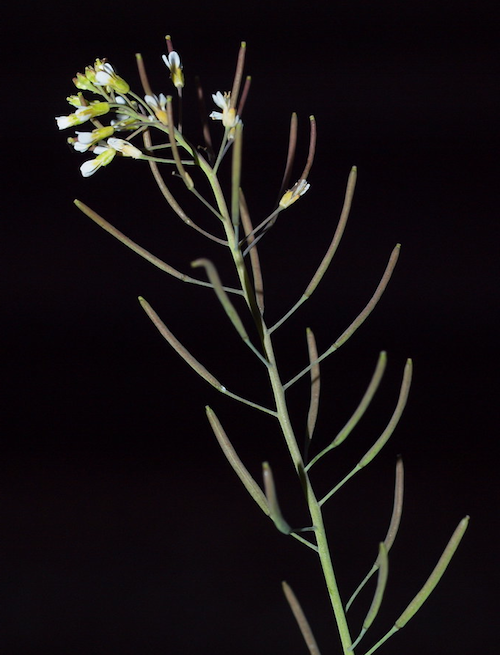|
|
Developmental Biology - RNA Cross-Talk
Cross-Talk Between 2 RNA Systems
The first signs of cross-talk between 2 RNA systems for surveillance and silencing of molecular pathways...
A team of scientists in Korea have revealed new findings from their research on how cell systems using surveillance interact or "cross-talk" in their identification of toxic molecular systems. This is the first research to identify such "cross-talk" exists. As these pathways are fighting toxic or foreign substances, the study may have application in development of antiviral drugs, gene therapies, and possibly be significant to agriculture.
The central dogma of molecular biology describes that in a cell, double-stranded DNA is transcribed into a single-stranded molecule called RNA, which is ultimately translated into protein.
But, the process is not foolproof. Occasionally, it produces RNA or protein molecules with errors that can harm a cell. To protect cells from such potential harm or from foreign viral RNA, cells have developed complex surveillance systems to identify and degrade abnormal RNA and proteins.
For example, RNA Quality Control (RQC) targets any of a cell's own error ridden RNA. Post Transcriptional Gene Silencing (PTGS), primarily targets foreign RNA such as an invading virus, by "silencing" ALL foreign genes. Similar to this is a separate cellular system that handles Protein Quality Control (PQC).
To maintain control over all these processes, surveillance systems are tightly regulated. As both RQC and PTGS target RNAs, when one process is suppressed, the other is activated.
In the new study published in Nature Plants, scientists at the Daegu Gyeongbuk Institute of Science and Technology (DGIST) in Korea, led by June M. Kwak PhD, uncovered a link between molecular pathways involved in degrading RNA.
Using Arabidopsis thaliana (commonly called 'thale cress' or 'mouse-ear cress') a small flowering plant native to Eurasia and Africa and considered a weed, scientists designed gene systems allowing them to monitor RNA silencing in that plant. A green fluorescent protein gene was used as a target or prey molecule — and paired with a molecule called Orion. Orion exploits the PTGS system which targets and degrades prey RNA.
Plant cells expressing the prey without Orion glow with green fluorescence, whereas those that express both the prey and Orion, referred to as PORI cells, show virtually no fluorescence .
Using this system, researchers identified a defective plant that exhibited fluorescence. This plant carried a mutation in a protein called RPT2a, which is known to be part of the protein quality control system. Investigations revealed how RPT2a is critical to the cross-talk between RQC and PTGS. Specifically, they found that RPT2a targets RQC proteins for degradation, which reduces the influence of RQC and promotes the role of PTGS. This is particularly beneficial when foreign RNA is present in the cell, as unlike RQC, PTGS includes an amplification process that alerts nearby cells to silence foreign RNA.
This study is the first in the world to show the role of RPT2a protein in maintaining the balance between the two RNA-degrading systems in a cell.
"The RNA surveillance machinery involved here is the same used in other plant, animal, and human cells in response to viral infections or by any foreign genetic material. Therefore, we have a better understanding of the working of these systems which will be useful for A) developing new vaccines & antivirals to treat diseases, or B) Implementing genetic manipulation, such as in agriculture and/or in gene therapy."
June M. Kwak PhD, Professor, Daegu Gyeongbuk Institute of Science and Technology (DGIST), Korea.
Abstract
RNA quality control (RQC) and post-transcriptional gene silencing (PTGS) target and degrade aberrant endogenous RNAs and foreign RNAs, contributing to homeostasis of cellular RNAs. In plants, RQC and PTGS compete for foreign and selected endogenous RNAs; however, little is known about the mechanism interconnecting the two pathways. Using a reporter system designed for monitoring PTGS, we revealed that the 26S proteasome subunit RPT2a enhances transgene PTGS by promoting the accumulation of transgene-derived short interfering RNAs without affecting their biogenesis. RPT2a physically associated with a subset of RQC components and downregulated the protein level. Overexpression of the RQC components interfered with transgene silencing, and impairment of the RQC machinery reinforced transgene PTGS attenuated by rpt2a. Overall, we demonstrate that the 26S proteasome subunit RPT2a promotes PTGS by repressing the RQC machinery to control foreign RNAs.
Authors
Myung-Hee Kim, Jieun Jeon, Seulbee Lee, Jae Ho Lee, Lei Gao, Byung-Hoon Lee, Jeong Mee Park, Yun Ju Kim and June M. Kwak.
Acknowledgments
The authors thank Y. Watanabe for the pDCP2-DCP2-GFP transgenic line, H. Lange for the RRP41-GFP and RRP41-MYC transgenic plants, H. Vaucheret for the L1 line, S. Park for the JAP3 transgenic plants, C. You and J. H. Park for the technical advice. This work was supported by IBS-R013-G2 from the Institute for Basic Science and in part by a grant from National Research Foundation (2019R1A2C3007376) and start-up funds from DGIST to J.M.K., and in part by (IBS-R013-D1) from the Institute for Basic Science.
Return to top of page.
| |
|
Dec 10 2019 Fetal Timeline Maternal Timeline News
 Arabidopsis thaliana or 'thale cress' CREDIT Wikipedia.
|



